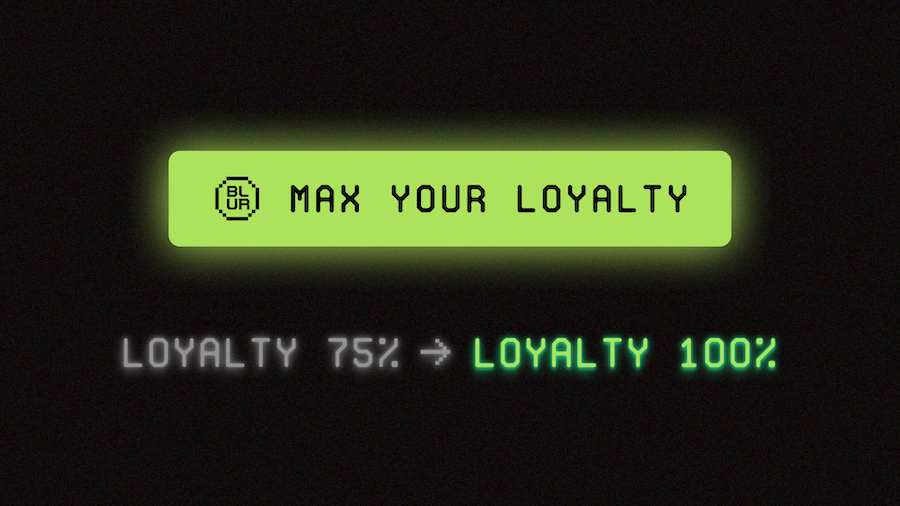Blur V2 is officially launched, what are the changes in the points incentive system?
What are the updated point incentives in Blur V2's launch?Author: BlurTranslation: Felix, BlockingNewsIn February of this year, the NFT market Blur launched its Bid for Airdrop incentive plan, which helped it become the NFT aggregator with the highest sales. However, the incentive mechanism introduced by Blur resulted in the accumulation of “false” transactions on the platform. When profitable NFT holders stopped accepting the offers, the market plummeted, and Blur faced criticism. Blur officially launched its V2 version today, and the important upgrades in this version include not only optimized transaction gas fees but also the addition of “Trait bidding” functionality. How does this feature change the Blur point system? This article will take you on a tour.Gas optimization:Blur v2 has undergone a lot of optimization to save gas fees. The gas cost of Blur transactions has now been reduced by 50%. At the current gas price, buying each NFT on Blur v2 can save you $16. In addition, all smart contracts have been audited by Chain Light.Trait bidding:Blur v2 allows users to bid on NFTs with different rarity levels. All NFTs support attribute bidding, but only specified series of NFTs can earn points. Currently, only 12 NFT series support attribute bidding points, which are Wrapped Cryptopunks, Azuki, Milady, DeGods, Bored Ape Yacht Club, Mutant Ape Yacht Club, PudgyPenguins, Otherdeed, Bored Ape Kennel Club, CloneX, Beanz, and Doodles. Bids made on Blur v1 will no longer be valid, and users need to re-bid on Blur v2.How does attribute bidding work:The way attribute bidding works is the same as collection bidding, but it is specific to certain attributes rather than the entire collection.When a seller tries to sell a product through attribute bidding, the oracle will check in real-time whether the product has the relevant attributes. This ensures protection for attribute bidders.However, many collections store their metadata on centralized servers that they control. After the oracle has verified the attributes of an item, the item may change its attributes. Blur cannot provide any guarantees against this situation. Preventing collections from dynamically changing their attributes is beyond the control of Blur.
Bid Points
The operation rules of bid points are as follows:
- Attribute bid score = (attribute bid / popular set bid) x (number of NFTs with the attribute)
- The higher the attribute bid, the more items in that attribute, the more points will be obtained.
- The weight that an attribute bid can obtain based on its price is limited. It is not possible to cheat the system by bidding 1000 ETH only on 1/1.
- Due to the higher supply of intermediate bids, intermediate bids with moderate premiums can earn more points than rare bids with higher premiums.
Attribute bid points will not be diluted. If a certain NFT series previously received 100 points per day, it will still receive 100 points per day. The only difference is that these points are now distributed among set bids and attribute bids.
If collectors are willing to pay a premium for attributes, more points will be allocated to attribute bids. On the other hand, if collectors are not willing to pay a premium for attributes, more points will be allocated to set bids.
- The Rise of Web3 Social
- Full text of South Korea’s first independent “Encryption Act”: Insider trading carries a maximum sentence of life imprisonment.
- Has Web3 effectively solved the problems in Web2 marketing?
In practice, most of the points will be used for set bids, because the base price is usually much higher than intermediate bids and rare bids, and the exact allocation is determined by the market.
Second Season Updates
Blur’s first season launched market protocols, bid pools, and countless tools for listing, cleaning, and monitoring the market. The second season introduces lending and BNPL (supported by Blend), full support for mobile devices, notifications, attribute bidding, and Gas-optimized v2 markets. There are also three undisclosed key developments, and Blur will share the second season’s schedule once these developments are close to release.
Note
Users can continue to earn listing points on series that are not enabled by Blend, and listing points are as valuable as bidding points. Loyalty is important for each collection. Just list on Blur and maintain MAX LOYALTY to maximize rewards for the second season.

Let’s wait and see whether Blur V2, which has been launched, can sit firmly on the first seat of NFT aggregators, win market praise, and regain its damaged reputation.
Relevant Reading: Messari: Analyzing the Success of Blur’s Airdrop Model from a User Retention Perspective
We will continue to update Blocking; if you have any questions or suggestions, please contact us!
Was this article helpful?
93 out of 132 found this helpful
Related articles
- First Impressions of Threads: Is this “Twitter Killer” any good?
- Meta launches Twitter competitor Threads:
- Review: “Twitter Killer” Threads officially launched. How does it perform?
- Dr. Lu Qi, the founder of MiraclePlus, says that AI and Web3 will create a new data-driven society.
- Interview with Justin Sun: Web3 Yu’ebao stUSDT, Tron’s Ambition to Connect DeFi and TradFi
- Custom Collateral Tokens? A Summary of GMX’s New V2 Version HighlightsGMX recently released its new V2 version
- Step-by-step guide on how to create an ERC-6551 account for NFTs






